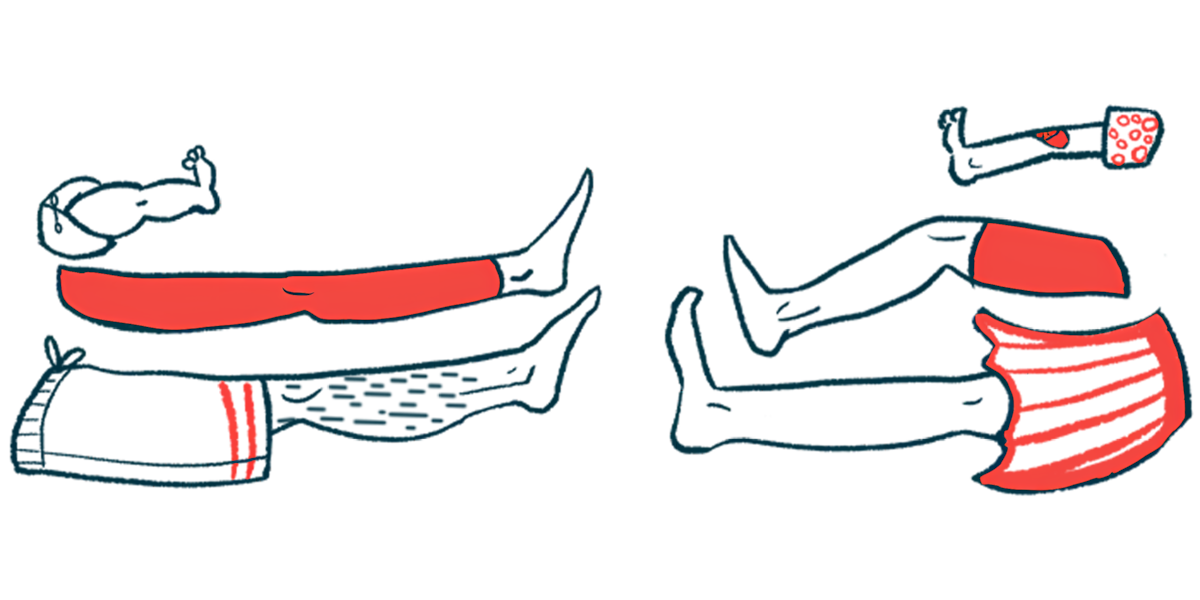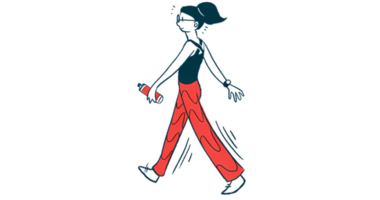Foot pain tied to increased risk of falls in Parkinson’s disease
Researchers compared risk of falls in 124 patients, people without the disease

Having foot pain, particularly of mild intensity or occasional pain, is associated with a higher risk of falls among people with Parkinson’s disease, a study in Spain shows.
The study assessed the factors that could contribute to a higher risk of falls with Parkinson’s and found that people with the disease had a higher risk of falls over those without it, particularly if they had foot pain.
“This research confirms further evidence that people with Parkinson’s disease who suffer from foot pain are at high risk of falling,” the researchers wrote. The study, “Relationship of foot pain with the increased risk of falls in patients with Parkinson’s disease,” was published in the Journal of Foot and Ankle Research.
Falls are a common problem for Parkinson’s patients and are usually associated with the disease’s motor symptoms, which include rigidity, slowness of movements, and impaired balance and gait. They can also increase the risk of sustaining more serious injuries, such as bone fractures.
Previous falls, gait changes, and postural imbalance have been identified as predisposing factors for falls, while the disease’s severity and duration, previous falls, and dementia could predict the risk of falls. Foot pain may also contribute to walking impairments and being susceptible to falls.
Link between foot pain and falls in Parkinson’s disease
“However, the relationship between fall risk and foot pain in Parkinson’s disease has not been investigated,” wrote researchers in Spain who conducted an observational study to compare the risk of falls in people with Parkinson’s disease and in people without the disease, who served as controls. A total of 124 participants, 62 with Parkinson’s and 62 controls, with an age range between 50-84, were analyzed.
Most participants were male and almost a third (30.6%) of those with Parkinson’s had stage 2 disease, according to the Hoehn and Yahr scale, which denotes involvement of both sides of the body without balance impairment. This scale is used to determine functional disability associated with Parkinson’s, with higher stages indicating more severe disease.
Fall risk was assessed using the Downton fall risk scale, which evaluates several factors that may have an impact on the risk of falls, including previous falls, medications, sensory impairment, mental state, and the ability to walk. The scale’s highest values indicate a higher risk of falls.
The percentage of patients with a high risk of falls was significantly higher among those with Parkinson’s than those without the disease (40.3% vs. 3.2%). The mean value of the Downton fall risk scale was also higher in Parkinson’s patients (2.65 vs. 1.31). Statistically significant differences were also seen between the two groups across all score dimensions, with the exception of mental state.
High or very high fall risk values were seen in a larger proportion of Parkinson’s patients with foot pain than in the controls with foot pain (56.4% vs. 6.4%). High or very high fall risk values were also seen in 22.6% of patients with moderate pain and in 24.2% of those with occasional pain.
There was a strong positive correlation between foot pain and falls among people with Parkinson’s disease, suggesting “as foot pain increases, the number of falls also significantly increases and vice versa,” the researchers wrote. “The findings corroborate the initial hypothesis, confirming a higher risk of falls in participants with Parkinson’s disease and highlighting that foot pain contributes to an increased risk of falls.”
They said future research should combine different measures of foot pain in fall prediction models and assess the risk of falls during disease progression.






